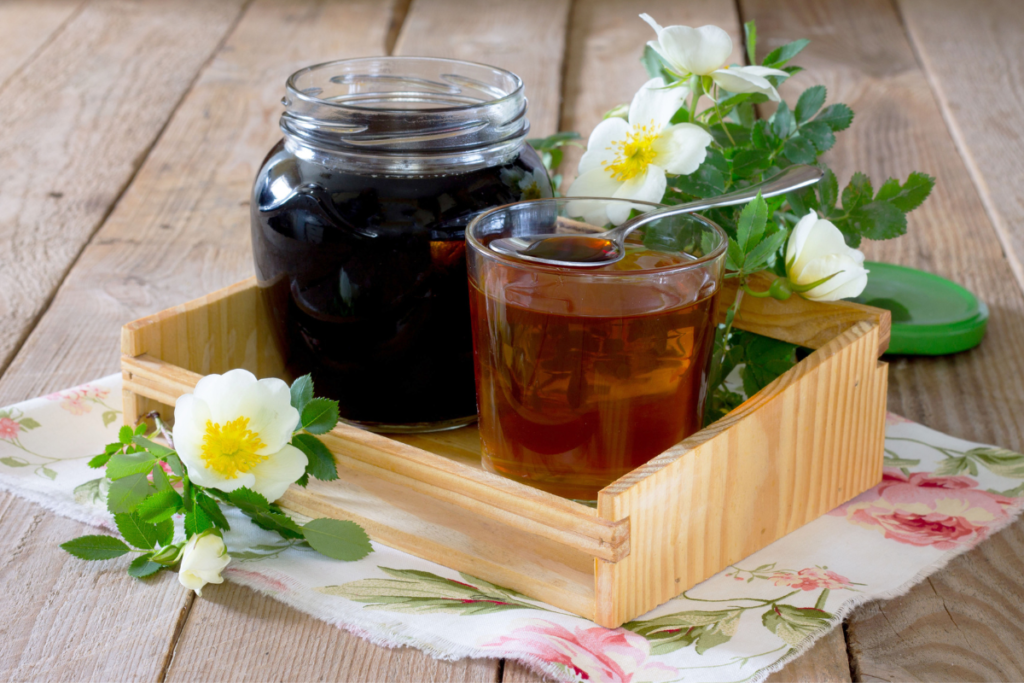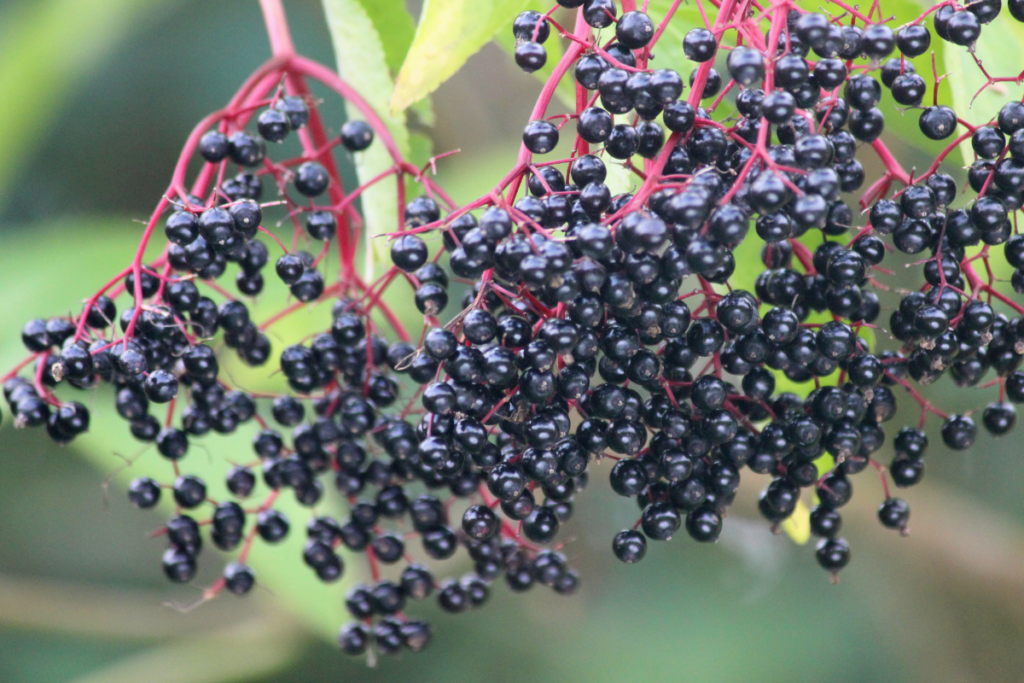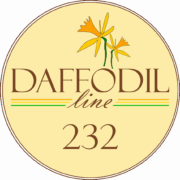Buses provide a place and a means for us to chat and connect with each other and the countryside around us, and I have found that one of the other best ways of connecting with the countryside is actually by eating it!
This could be by foraging, gardening, supporting small local producers such as Little Marcle Organic Produce (alight from the 232 at Lilly Hall Lane on the A449 or walk/cycle from Ledbury), allotmenting (at Wellington Heath, Newent, Gorsley, Crow Hill or Lea), community orcharding (Crow Hill), or community gardening (Ross, Bishops Frome). I helped to found Bishops Frome Community Garden in 2011, and although the Ledbury-Bromyard line is unfortunately now lost, this is reachable from the Daffodil Line via the 476 and 469 DRM Bus services.

So far this year, our allotment has yielded decent quantities of Strawberries, a few Tayberries and Gooseberries, plentiful Redcurrants and bumper crops of Blackcurrants and Raspberries, which have been frozen then turned into cordials when time permits. The Marjoram, Lesser Calamint, Mellissa, Rocket and Borage have enlivened salads and the first Courgettes promise chutneys for the winter store cupboard. There were a few issues with Sawfly and Aphids plus a record-breaking dry hot June this year but the plants coped fine and we were provided for amply. Utilising the ‘no-dig’ method with mostly perennial plants conserves the hydrology, biology, mycology and overall integrity of the soil which is otherwise sandy and prone to erosion through over-cultivation.
In the garden, Great Tits fledged from a nest-box I restored and were fed by the adults on the fence outside the window, and a hedgehog foraged across the lawn. Moth numbers, which were low here when I moved in five years ago, are on the up and the Ragged Robin I grew from seed is thriving in the ephemeral pond. The Day Lilly buds and flowers were delicious, and the Winter Savory herbs we got from Castrees Garden Plants at Bromsash will be companion plants for beans. Jacobs Ladder perfumed the air, Echinacea seedlings are thriving and Passiflora continues to bloom and set fruit. The water-harvesting system is developing gradually and we are currently able to store roughly 1000 litres, utilising water-butts and a header tank saved from a skip, that can now be hosed out to pots and ponds with a bilge pump set upon a work-surface built from up-cycled scrap-wood. The hazel poles I coppiced locally over the last two winters have an infinite number of uses, although a coating of vegetable oil keeps them in good condition for longer.

As autumn arrives across the landscape, bulbs only a few millimetres across will be forming from the seeds of last year’s wild daffodils. The last of the Bluebell seed ripens and falls with summer storms. Roots and fruits have swollen, and are ready for harvesting by people and wildlife alike. Swallows gather to feed and drink together prior to their migration, skimming low over the surface of lakes such as Hartleton and Drummonds Dub near Linton, and making use of our telephone wires to gather and communicate with each-other, as the first chattering Fieldfares join Redwings and resident Mistle Thrushes in the search for food. The machines reap the products of agronomy for profit and subsidy, but the bus-using walker can sample the local terroir almost for free. As I outlined in my first article, you can use a map, camera and identification guides to empower you to learn the names and characters of the species around you. Don’t ever consume anything that you can’t identify: this applies as much to agro-chemicals as it does to foraging.
Where the flail permits, Hawthorn ‘haws’ abound – to the birds and to me they are a hedgerow delicacy – I nibble them, or extract the juice through gentle simmering for jellies, or soak them in brandy for an epicurean winter remedy, Crataegus being a cardio-vascular tonic that balances blood pressure. Avoid those with tiny dark pin-prick holes as a grub will have beaten you to it. I generally use caster, light soft brown, or preserving sugars. Sloes on the Blackthorns can be dealt with in similar ways. The cloying sweetness of Guelder Rose fruits can only be experienced cooked, and is less worthwhile than the nutty richness of Rosehips from Dog Rose and Sweet Briars. However, beware the irritant yellowish hairs between the hips’ flesh and the seeds, so use a cotton jelly-strainer (mine is from G D Parker Hardware in Newent). Dogwood and Spindle berries are beautiful, tempting, but not to be eaten by humans. Wild or feral bird-sown blackcurrants and gooseberries and are out there to be savoured, plus they make great hedging plants for the self-sufficientist.

Self-sufficiency is, however, difficult and it is better perhaps to aim more for community resilience. Even the most seasoned bush-crafting survivalist will find it difficult to make it on their own. Shocks to the system that have arisen in the forms of disease (Covid, Ash die-back, Foot-and-Mouth, BSE), austerity, war and political incompetence could have been lessened had we had improved access to land. We also need knowledge and wisdom to go with it, although many people have found strength in community and the opportunity to share what we have. The Daffodil Line is a excellent example of that, and we should all be grateful to Ross student Violet Hill for taking us on the first steps towards that common ground.
Jack-by-the-Hedge land & garden care 07553 908784 futurerustic@zoho.com

Recommended Reading
Food for Free – A guide to the edible wild plants of Britain, Richard Mabey, Collins, London, 1972
Food from the Wild, Ian Burrows, New Holland, London, 2005
Foraging Pocket Guide – Food for all seasons from Britain’s woods, meadows and riversides, Marlow Renton & Eric Biggane, Otherwise Publishing, Wild Food UK, Hereford, 2020
The Complete Book of Self-Sufficiency, John Seymour, Faber 1976 / Corgi, London, 1981
The Self-Sufficient Gardener, John Seymour, Faber and Faber, London, 1978

